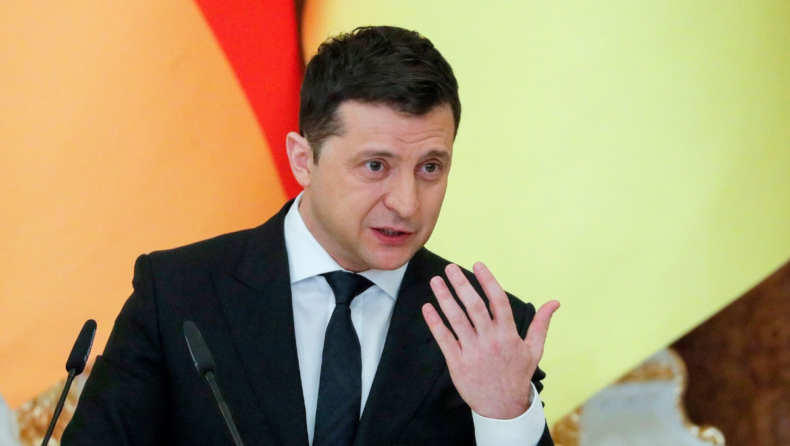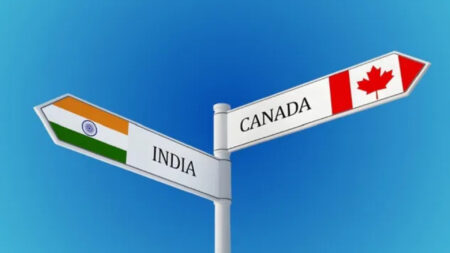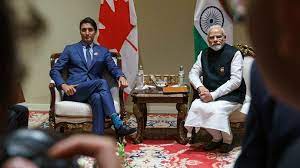As Sweden and Finland set to join NATO, Ukrainian leader push for more support, modern artillery systems and other armaments from the alliance.
As the leaders of the alliance met in the midst of what its chief described as its gravest crisis since World War II, Ukraine’s President, Volodymyr Zelenskyy, rebuked NATO for not supporting his embattled nation more fully and requested more armaments to combat Russia’s invasion.
The peace in Europe was disrupted by Russia’s invasion of its neighbour. As a result, NATO sent troops and weapons into eastern Europe on a scale not seen since the Cold War. Sweden and Finland are set to join the defence alliance.
Alliance members have also given Ukraine billions in military and civilian aid. However, Zelenskyy lamented that NATO’s open-door policy for new members did not apply to Ukraine. According to Zelenskyy via video link, NATO’s open-door policy shouldn’t be like the old turnstiles on Kyiv’s subway, which remain open but close when you approach them until you pay.
He urged the authorities to provide Ukraine with the support it needed to overcome Russia or risk a delayed war between Russia and themselves. He also requested more modern artillery systems and other armaments.
Zelenskyy has admitted that NATO membership is a far-off goal. In order to avoid a direct conflict between NATO and a nuclear-armed Russia, the alliance is attempting to strike a fine balance by letting its member countries arm Ukraine.
Secretary-General Jens Stoltenberg stated that the alliance is currently experiencing the worst security crisis since the Second World War in the meeting with 30 NATO leaders in Madrid.
US Military Presence in Europe
The summit, according to US President Joe Biden, will make it clear that NATO is united and strong. The US contributes the majority of NATO’s military force. According to Biden, they are stepping up, and that’s demonstrating that NATO is more essential than ever. He announced a significant increase in the American military’s presence in Europe, including the establishment of a permanent US facility in Poland, the stationing of two additional Navy destroyers in Rota, Spain, and the deployment of two more F35 squadrons to the UK.
Differences between the Allies
However, tensions between NATO partners have also grown as the cost of energy and other necessities has surged, in part as a result of the war and stringent Western sanctions against Russia. There are issues with how the war will be resolved. And what, if any, concessions should Ukraine make to put an end to the violence?
Money could also be a sensitive subject. Only nine of NATO’s thirty members presently adhere to the organisation’s goal of devoting 2 percent of GDP on defence. British PM Boris Johnson, whose nation did hit the target, asked NATO allies to dig deep to restore deterrence and ensure defence in the upcoming decade.
NATO’s presence in eastern Europe has already increased significantly as a result of the war, and allies are anticipated to agree at the summit to enhance the force’s rapid reaction force by nearly eight times, from 40,000 to 300,000 soldiers, by the following year. The troops will have their home countries as their bases, but they will be stationed in particular states along NATO’s eastern flank, where the organisation intends to stockpile supplies of equipment and ammunition. According to Stoltenberg, NATO is undertaking the biggest overhaul of its collective defence since the conclusion of the Cold War.
NATO’s new Strategic Concept
The leaders will also release NATO’s new Strategic Concept, a once-a-decade set of priorities and goals. The most recent of these, from 2010, referred to Russia as a strategic partner. The alliance is now prepared to name Moscow its top threat. The document will also outline NATO’s position on matters such as cybersecurity, climate change, and China’s expanding economic and military reach. According to Stoltenberg, China, although not NATO’s adversary, poses threats to their values, interests, and security.
The leaders of Japan, Australia, South Korea, and New Zealand are attending the summit as guests for the first time, demonstrating the growing significance of Asia and the Pacific region. On the sidelines of the summit, Biden was scheduled to meet with Japan’s PM Fumio Kishida and South Korea’s President Yoon Suk Yeol to discuss North Korea’s nuclear programme.
Sweden and Finland’s Entry
After Turkey agreed on Tuesday to drop its objections to Sweden and Finland joining NATO, the summit started off with one issue resolved. The two Nordic countries gave up their long-held nonalignment and applied to join NATO in response to the invasion as a defence against an increasingly aggressive and unpredictable Russia, which shares a long border with Finland.
Recep Tayyip Erdogan, the Turkish president, threatened to block the Nordic countries’ membership in NATO unless they changed their attitude towards the Kurdish rebel groups, which Turkey views as terrorist organisations. Alliance Secretary Stoltenberg declared that the impasse had been resolved following urgent top-level summit meetings with the leaders of the three nations.
According to Turkey, Tuesday’s agreement was a victory. The Nordic countries have agreed to take action against organisations that Ankara views as threats to national security, including the Kurdistan Workers’ Party, which is also regarded as a terrorist organisation by the US and the EU, and its Syrian extension. They also agreed, according to the report, to take decisive action on the extradition of terrorist criminals and refrain from imposing embargo limitations on Turkey’s defence industry.
The two nations will receive a formal invitation to join the 30-nation alliance on Wednesday, according to Stoltenberg. He claimed he was certain Finland and Sweden would join, but the decision still needs to be approved by each individual country. Although he did not give a deadline, Stoltenberg stated that he anticipated the process being completed quite swiftly.













